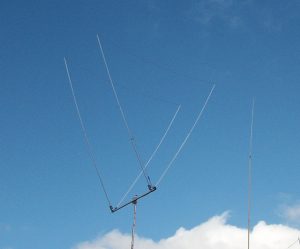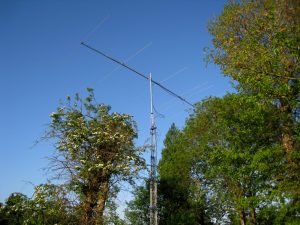Kenwood SP990 Speaker Mods and Upgrade
Most of our TS990 content on the site and anything relating to the ‘990’ is listed in the top menu bar ‘Kenwood TS990 Resources‘- but this mod is quite special, so we decided to link directly to it from the home page. It’s directed more towards owners of the Kenwood TS990 external desktop speaker unit – the ‘SP990‘, although could be a good mod for any desktop speaker unit – regardless of whether it’s Kenwood, Icom or anyone else for that matter.
The SP900 is a nice looking speaker and looks well, fitting in nicely next to your TS990. Two of them [one of the right and one on the left] of your transceiver look even better, but looks are only only half the story. It may look good, but what if the sound is not really up to scratch. We found that out quite early on the the stock SP990 from the factory – it’s pretty dire!
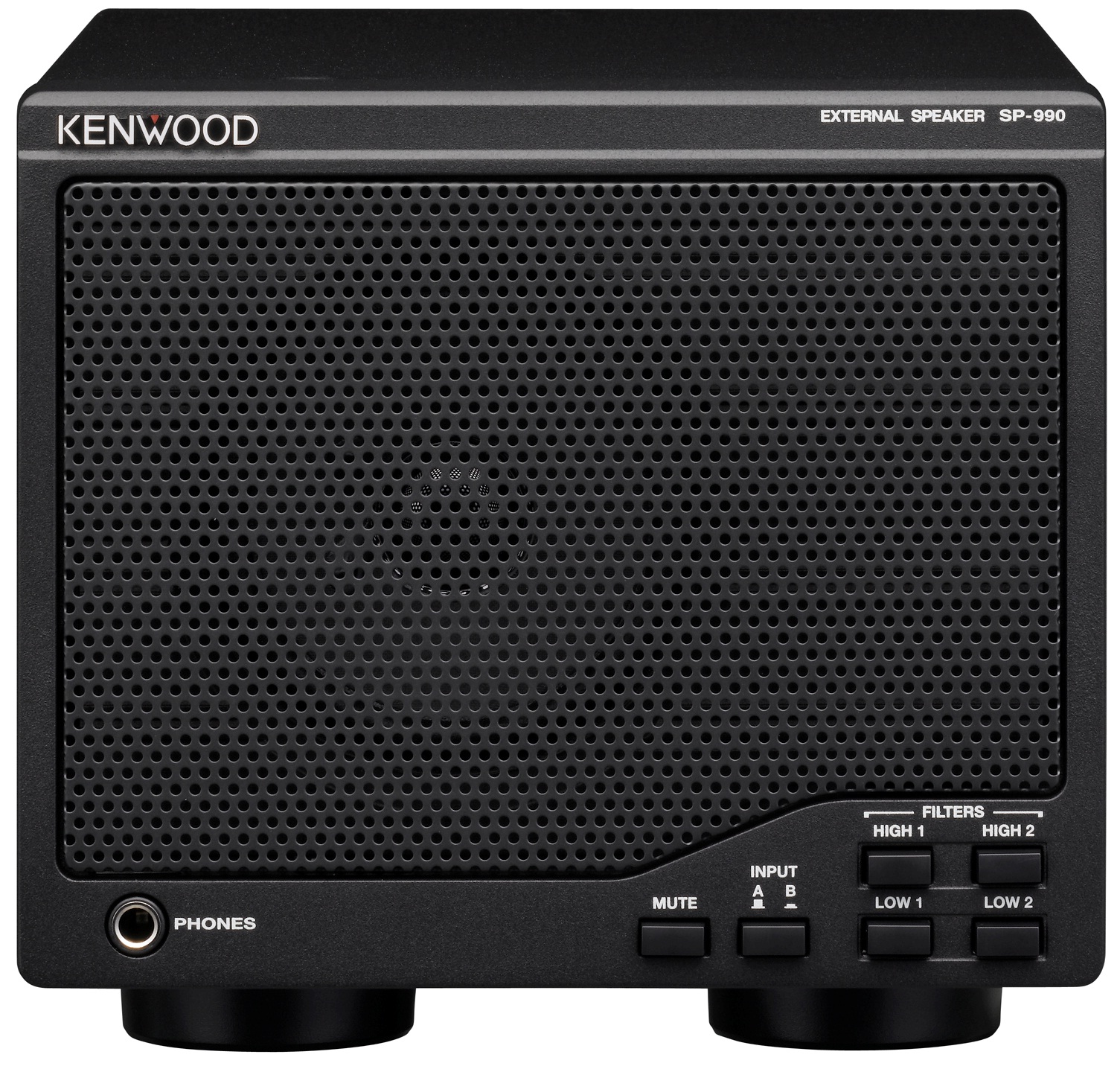
For some [really odd reason] Kenwood’s engineers seem to think that putting low-end 4 inch 10w full range driver into a hollow metal box is akin to classing it as a ‘premium loudspeaker’. Well – it’s pretty far from the truth. It looks nice and matches the TS990 – but that’s where the story ends. Fire up your TS990 and you get a shallow and hollow sounding mushy vibrating ‘mess’. To be honest, the majority of the desktop loudspeakers for the amateur radio market fall into a similar category. Only a small handful are the exception.
So what can you do without spending a £600 pounds on a respectable B&W solution?
You have a few options available here. If money is no object, then plumb in a ‘Reference’ desktop range from any of the high-end manufacturers. As an alternative, ‘Phonema‘ [Spain] offer an ‘Acoustic’ only upgrade called the ‘K99’ which includes a variety of foam and acoustic material upgrades. Nice, but you still retain that same dreadful 10w driver. For a single speaker acoustic upgrade the cost is around £70 which does NOT include import duties [now the UK is not in the EU] , VAT and shipping so you are probably looking in the £90+ area!
However, I have 2 x SP990’s – one each side of the radio, so the cost is double. Hence looking towards an alternative solution.
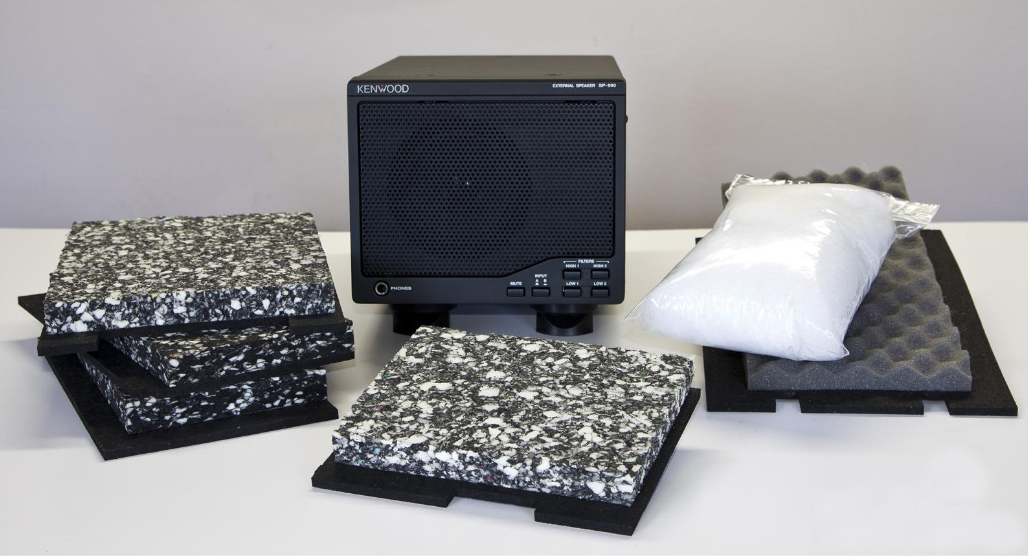
One step further up the ladder is the Phonema GPH-X70 Gamma PHITS driver upgrade. Add another £60 on top of the insulation package. So as you can see, the total starts to really add up. We have no info on the technical side of the speaker. Even Phonema themselves do not put any useful information on their own website about the technical capabilities of the driver – only that it’s on 8 ohm unit. To me as a potential buyer, that’s a bit off-putting. Personally I’d like to know what the ‘key’ points about the driver are.
‘DXEngineering‘ in the USA sells both the ‘Acoustic K99‘ and the ‘GPH-X90‘ upgrades. We couldn’t find any UK distributor for either of the kits so presume the market in the UK is too niche. If you’re interested in the Phonema upgrade, we found W0FW in the US had performed the upgrade although details are sparse. See more here.
Doing some fairly basic calculations. If I wanted to import 2 acoustic insulation sets and 2 GPH-X70 drivers into the UK – I’d be looking at over £300 when you include import duty, VAT and shipping. That’s pretty outrageous in anyone’s book!
But fear not – here at Q82.uk, we’ve done a full homebrew conversion on the Kenwood SP990 using a UK sourced premium driver, together with all the required acoustic material – and expert knowledge from someone who really knows what he’s talking about.
Here’s the datasheet on the Kenwood SP990. After quite a lot of searching, I came across a company located not so far from where I live. QTA Systems is located in Cambridge UK.
Following an email, I arranged a visit in order to collect a selection of speaker sound dampening materials. The location was at a private house and I was invited in. The owner had obviously been in the professional audio business for decades and his knowledge, experience and vast array of homebuilt equipment put me to shame. The equipment was constructed to such a standard I’ve never seen before. A 10 minute visit turned out to be 2 hours as he let me look inside many homebrew designs. The construction was just awesome. No shortcuts. It was build to sound and be the best. Before leaving, he fired up a few audiophile CD’s – I’ve never heard any CD sound so good. Words can’t describe it. To this day I don’t know the owner’s background.
Getting back to the SP990, I explained the problem. He advised me about small enclosures explaining many shortcomings but said that my best options would be some acoustic matting, damping sheet and some ‘Long Haired Herdwick Sheep’s Wool‘, together with a replacement driver. He mentioned that there were plenty of better drivers on the market but a 4 inch unit that would handle up to 40w, preferably with a Neodymium magnet would do a good job.
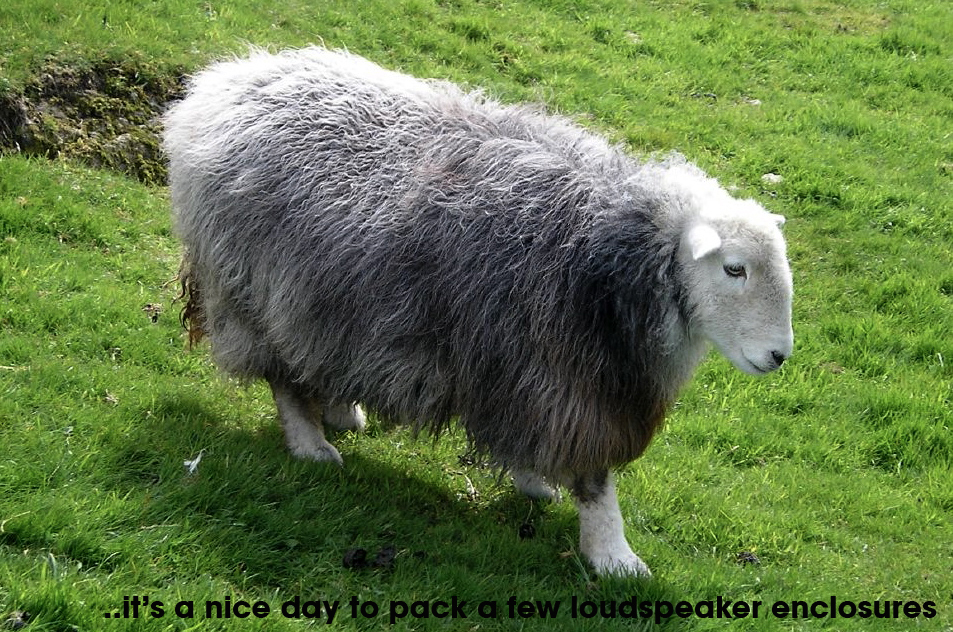
The long-haired wool makes for premium loudspeaker enclosure insulation material.
After chatting, the conclusion was that there wasn’t any regular ‘path’ for a fix and that a certain amount of experimentation was required – mainly not trying to put too much damping material in the enclosure was one mistake mentioned, saying that the enclosure needed to breath a certain amount. However, it was pointed out that the acoustic padding should be placed on the 2 sides opposing the speaker driver, the rear plus the top and bottom. Space should also be left just behind the speaker, rather than stuffing padding right up to the driver. In all I actually ended up with enough ‘Herdwick’ and matting to complete another 2 speakers – so plenty of spare and all for only £20.
With the above advice, I got to work and found from the word go that the result was super impressive.
With the original 10w Kenwood driver still in place, the improvement over standard was quite substantial. Gone was the fuzzy/messy resonances although it was apparent the driver didn’t like being pushed above about 50% of its 10w rating. So time to replace it with a new recruit.
Having been a DJ back in the 70’s and worked in hospital radio, I [kind of] knew my audio pretty well. So after browsing various drivers, I settled on the Beyma 4FR40nd. Beyma are based in Valencia, Spain and have been in the audio business since the late 60’s so should know their stuff! For starters, it was rated at 40w [80w peak] into an 8 ohm load, was fitted with a premium Neodymium magnet and exhibited a wideband frequency response from 100Hz to 20KHz. That’s a huge jump in performance over the standard unit. Even so, the TS990’s AF stages could never drive that high an output so I felt pretty safe for starters.
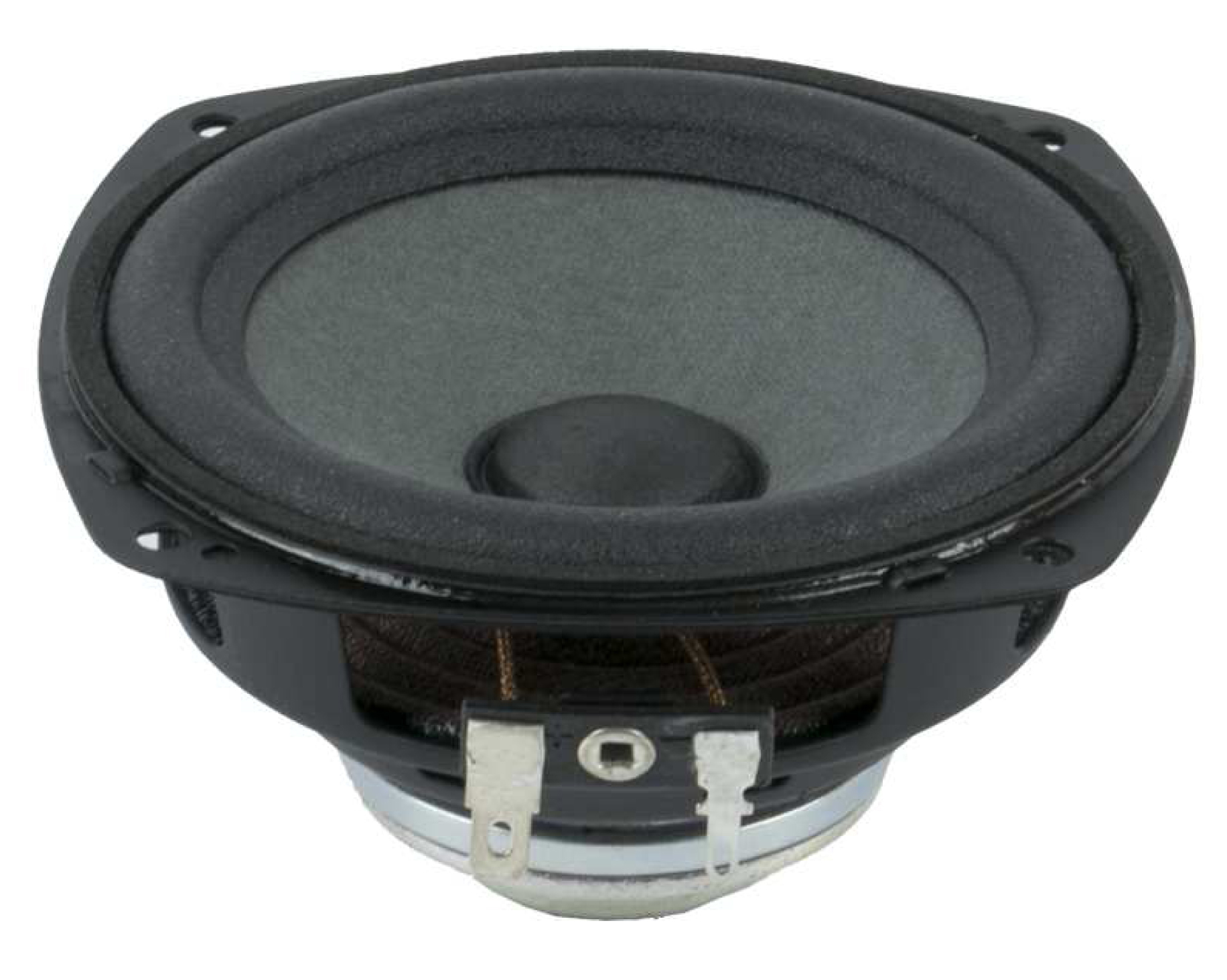
The drivers were being advertised by Blue Aran, a UK loudspeaker specialist at £29 each. I also saw that two different variants. there was a ‘Ceramic Magnet’ 40w version which certainly would have fit the bill at just under £19. I went for the premium Neodymium magnet version. Overkill maybe, but for the price – it was a no brainer!
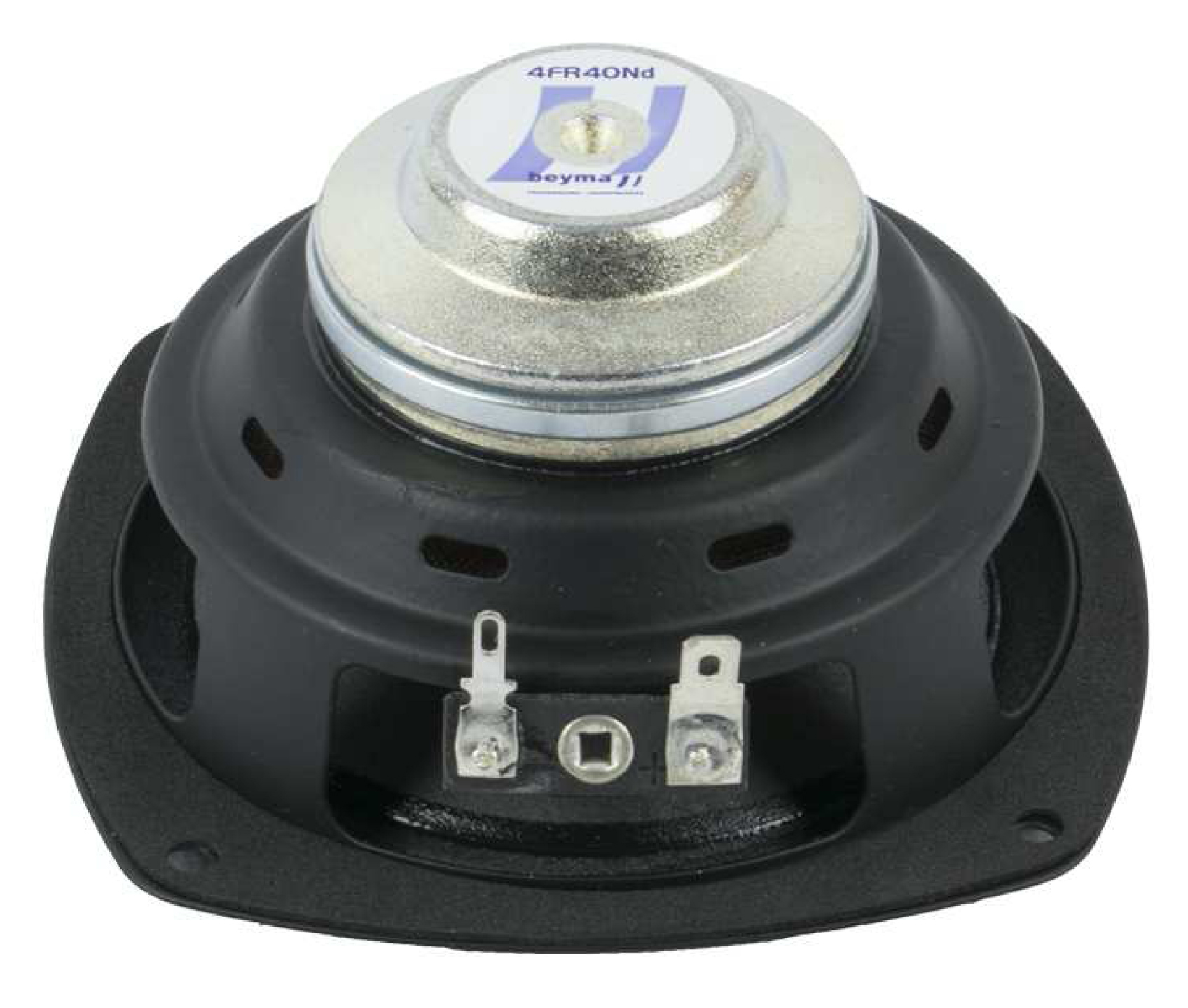
All in all this project cost me £58 for two [exceptional] speaker drivers and £20 in acoustic materials. A far cry from the £300+ if you went down the ‘Phenoma’ route. Our homemade solution worked exceptionally well and IMO, would be good for the majority of ‘Ham Radio’ type desktop speakers and a worthy upgrade and at only a fraction of the price.
In the coming weeks, I’ll publish more in-depth images and what went into the upgrade. Stay tuned!

